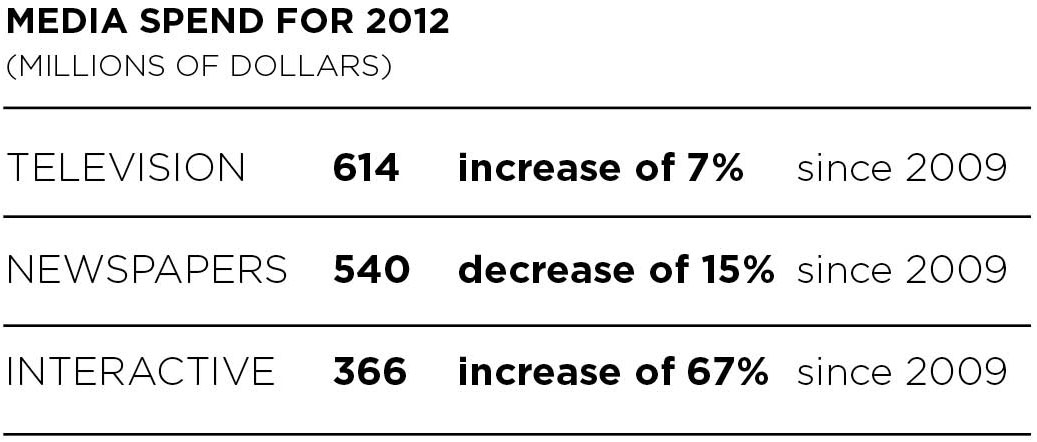The death of advertising and interruption marketing
Interruption marketing is what all advertising is: something that interrupts whatever you’re doing in the hope to steal your attention.
The interruptions have become more overt, extravagant and unbelievable, all in an effort to gain more of our attention.
The reality is that before this decade is up, this form of interruption marketing will be dead. Marketing will become personalised, customised and adapted to what we, the consumers, want, simply because we will be choosing what content/programming we want to watch. This essentially means that advertising will have to become content and not an interruption and the only way brands will get to show us their content is if they have our permission.
How do I know this? Because it’s already happening.
Television used to be our biggest influencer but for years we’ve had devices that have allowed us to record what we want and skip adverts.
The amount of money spent on mobile and online advertising has increased dramatically whilst traditional media spend has declined or experienced smaller growth.
In the last week, SKY TV lost its multi-million dollar coverage of the English Premier League to an online broadcaster. The relevance of SKY's loss is simple: it shows that choosing content is starting to become important to viewers. SKY said the loss wasn't the end of the world for them, but in reality, it's the beginning of the end. They desperately need to reassess their business model if they want to keep their subscribers. Well done to Coliseum Sports Media for this fantastic coup. And just imagine what will happen when they win the rights to the All Black's games or the World Cup in 2014...
Thanks to the dramatic growth of the mobile market we’re starting to “multi-screen” our TV time. We’re no longer couch potatoes and we’re actually becoming more involved in selecting the programming we want to watch, and then seeking out information about the shows or commenting about them on social networks.
Our Multi-Screening Habits
The Matrix, I mean Google and especially Google Plus, is the biggest influencer of what we see online. Google monitors everything we do online and displays what it thinks we want to see based on our online history. The question is: when will Google start displaying what it thinks we want to see everywhere else? The tech is already here but the link hasn’t been made just yet.
Almost every new television has Internet connectivity as standard. It will only be a matter of time when we’ll be creating specific user accounts for our televisions, most likely through Google, which in turn will allow us to customise what we want to watch. And this will include what advertising we want to see.
If I make a search online for BMW, Google displays some links and related ads. Wouldn’t it make sense for Google to share this info with my other devices? Instead of then seeing a series of random 30-second ads during a commercial break, I could now watch a 3-minute commercial for BMW? And by commercial, I mean content.
I’ve used BMW as an example because BMW was already doing this way back in 2001. They got a group of leading filmmakers and actors to create and star in a series of short movies based on BMW’s cars. And guess what? It worked brilliantly because it wasn’t advertising – it was content. You can view one of my favourites directed by Guy Ritchie at the end of this post.
In 2001, BMW's sales increased by 12.5%, and by 17.2% in 2002. No new product launches - just a series of movies.
So how do we, as advertisers, marketers and business owners, get ready for what’s coming?
The first step is to stop interrupting and focus on getting permission to communicate with your customers.
The future of permission marketing lies with mobile… but not mobile advertising. At the moment all mobile does is interrupt us. Take a look at these screen grabs. Why do I get these ads? I'm married, own an iPhone and WTF is the last ad on the right for? Pointless.
The real marketing benefits of mobile can be found in the apps we use.
Here are five reasons why:
1. Apps aren’t advertising
2. We choose them
3. We value them for their functionality
4. We don’t find them interruptive.
5. We spend on average 82% of our mobile time with them.
So if apps are the beginning of the end of interruption marketing, how are you going to use an app as a marketing tool and what should you bear in mind to make it a success?
1. The app must add value to your customers’ lives. How do people buy and use your product? Find a way in which your app can add value to their interaction.
2. Make it convenient to use. Remember the customer’s favourite person: ME.
3. Make it social. Activities that enhance connections among friends, like apps, will enhance the user experience of connecting with friends.
4. Entertain us. 40% of our app time is spent on games.
With more than 275,000 developers registered to build apps just for Apple’s iTunes store, the problem isn’t how to make an app, but what to say and do that will start a long-lasting, permission-based relationship with your customers.
And the simplest answer is to treat your customers like you would like to be treated yourself. That’s the essence of permission marketing.




